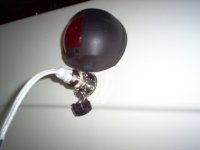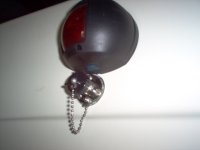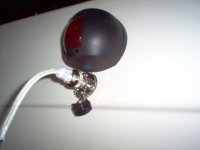Update on boat battery (recharging while towing) project.
George (Kerri On) is here in the Verde Valley, so we've spent a lot of fun time working on stuff, solving the World's problems and even doing a few useful things - like the truck/boat wiring project.
The plug that Brent (Discovery) used is from WestMarine (
http://www.westmarine.com/webapp/wcs/st ... &langId=-1 ) and should work perfectly. (It's $18.49 @ WM.)
I opted to use #10 wire, George is using #12. I think #12 will work just fine, but my wire was already ordered, so I'll use it. Expensive ($1.72/ft) stuff!
The only wiring challenge so far was to find out why the "Battery/Aux" terminal on the 7-pin RV socket on the truck wasn't 'hot. George and I both have F150's and neither had a hot terminal; but they were dead for different reasons. As it turned out - the circuit has both a fuse relay + a 30A fuse. On George's truck there was a fuse, but no fuse relay. On my truck it just the opposite (fuse relay, but no fuse...). I suspect there are a couple FoMoCo assembly-line folks who are proud of the money they saved FoMoCo by not installing the necessary parts. (By the way, the new style fuse on F150's [the little square one] was $4.29 at AutoZone.) And that was for ONE fuse; 'spensive!
Anyway, I think we've solved the wiring 'challenges and later today we'll complete the job (as soon as it warms up a bit...22degrees last night).
George plans to do a temporary arrangement (one long extension-like charging cable from the truck to the boat battery) to make sure eveything works as planned before he drills a hole (for the WM plug) in the side of his new boat. Probably a good idea. I'll wait and see how it works.
As previously described the "Battery/Aux" pin on the 7-pin RV connection is ignition switch controlled and the power comes through the voltage regulator so we should be good-to-go.
Casey



